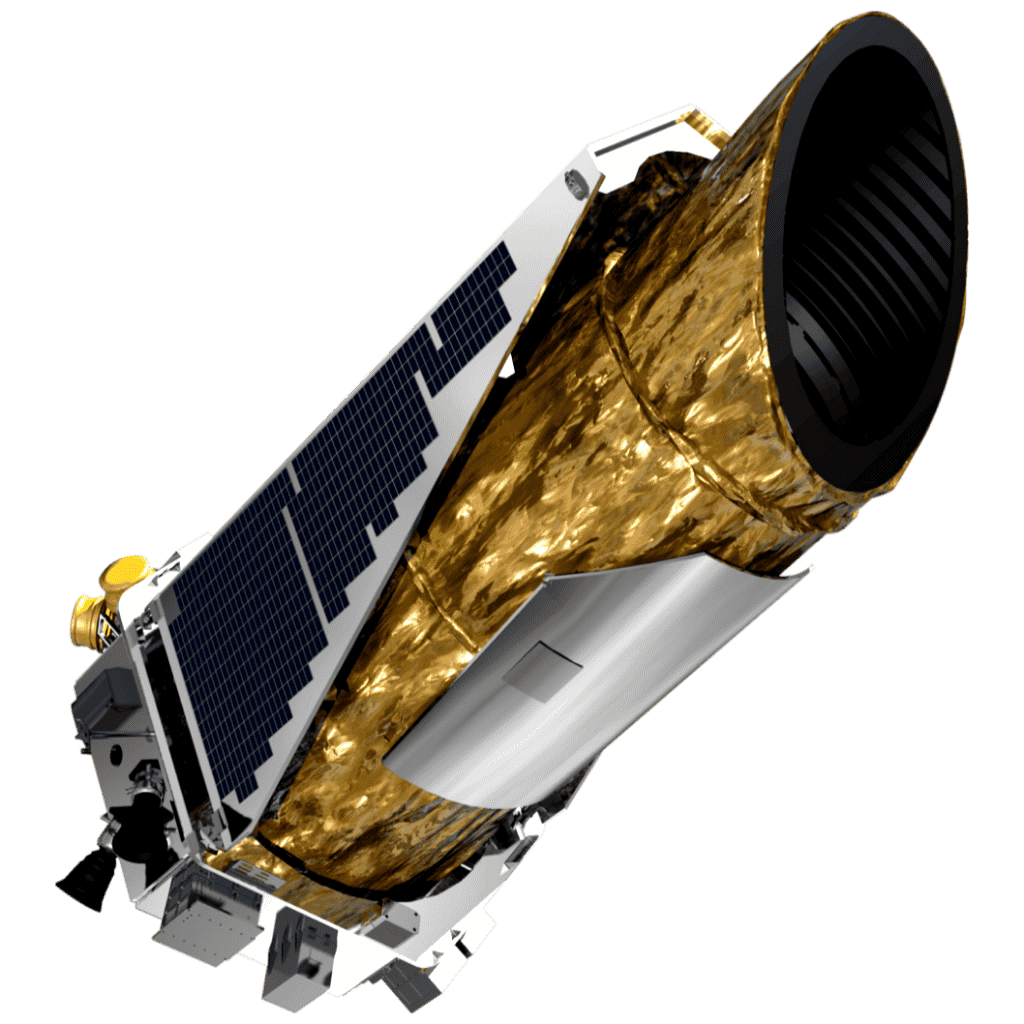Kepler Space Telescope
Planet Finder
Telescope discovering thousands of exoplanets

USPs
- Discovered over 2,600 confirmed exoplanets
- Used transit method for planet detection
- K2 mission extended its life after technical issues
- Monitored over 500,000 stars during its mission
- First telescope to find Earth-sized planets in habitable zones
- Revealed diversity of planetary systems in the galaxy
- Enabled statistical studies of exoplanet occurrence rates
Major Milestones
- 2009-03-07: Launched aboard a Delta II rocket from Cape Canaveral, initiating its mission to discover Earth-like planets via the transit method.
- 2009-05-12: Began its primary mission, entering an Earth-trailing heliocentric orbit to continuously monitor a field in the Cygnus-Lyra region.
- 2010-02-04: Released its first set of exoplanet candidates, identifying over 700 potential planets from the initial data.
- 2011-02-02: Confirmed its first exoplanets, including Kepler-10b, the first rocky planet discovered by the mission.
- 2013-05-15: Faced a second reaction wheel failure, ending the original mission but transitioning to the K2 mission with adjusted operations.
- 2014-04-17: Began the K2 mission, using solar pressure to stabilize the spacecraft and observe new fields along the ecliptic.
- 2016-05-10: Discovered the TRAPPIST-1 system with seven Earth-sized planets, later confirmed by other telescopes, highlighting habitable zone potential.
- 2017-12-14: Released its final K2 data set, having observed over 500,000 stars and identified more than 4,000 exoplanet candidates.
- 2018-11-15: Concluded its science operations due to fuel depletion, with the spacecraft placed in a safe heliocentric orbit.
- 2025-07-17: Data continues to be analyzed, contributing to over 2,700 confirmed exoplanets and ongoing research into planetary systems.
Cosmic Portrait
Kepler Space Telescope: Exoplanet Pioneer
Kepler Space Telescope, launched by NASA in 2009, marked a turning point in humanity’s search for planets beyond our solar system. Using the transit method, it monitored tiny dips in starlight as planets crossed in front of their host stars, confirming over 2,600 exoplanets and revealing that planets are more common than previously imagined.
- Mission Focus: Kepler stared continuously at a patch of sky in the constellations Cygnus and Lyra, tracking brightness changes in over 100,000 stars. Its goal: to determine how common Earth-like planets are in the habitable zones of Sun-like stars.
- Orbit Design: Positioned in an Earth-trailing heliocentric orbit, Kepler drifted behind Earth, free from terrestrial interference and capable of uninterrupted observation for extended periods. This placement allowed for the precise, long-term data collection essential to its success.
- Engineering & Data: Kepler was equipped with a 0.95-meter photometer that captured continuous brightness data. Its light curve analysis became the gold standard in transit-based planet detection. Notably, it identified multi-planet systems and rocky worlds smaller than Earth—some within their stars’ habitable zones.
- K2 Mission: After two of its four reaction wheels failed in 2013, Kepler was re-purposed as part of the K2 mission. By cleverly using solar pressure for balance, it resumed planet-hunting while also observing supernovae, star clusters, and even comets across new fields of view along the ecliptic plane.
Legacy and Scientific Impact
Kepler reshaped our understanding of planetary systems. It revealed that most stars host planets and that many systems are filled with super-Earths and mini-Neptunes—types of planets missing from our own solar system. Its discoveries proved that Earth-sized planets in the habitable zone are not rare but may be abundant across the galaxy.
One of its most profound impacts was statistical. By detecting thousands of planets and candidates, Kepler enabled scientists to estimate that the Milky Way may contain billions of potentially habitable worlds. It also advanced machine learning in astronomy, with algorithms sifting through light curves to detect exoplanet signatures.
Decommissioned in 2018 after running out of fuel, Kepler left behind a legacy of data that continues to fuel new discoveries. Many of its candidate exoplanets are still being confirmed, and the mission has laid the groundwork for follow-ups by missions like TESS, JWST, and PLATO.
Why Kepler Still Matters
Kepler opened our eyes to a universe teeming with planets—some rocky, some icy, and some potentially like Earth. It taught us that the night sky is not just filled with stars, but likely with solar systems of all kinds.
Its enduring influence is felt across both science and culture, fueling curiosity about alien worlds and helping us ask the big question with more evidence than ever before: Are we alone?
Fun Fact
Kepler found planets in the habitable zones of distant stars!